
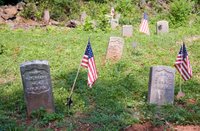

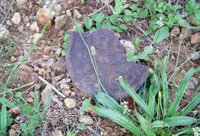
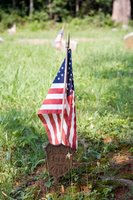
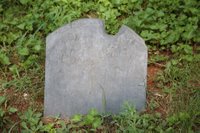
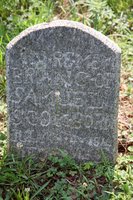
I have never seen so many Civil War veterans buried in a small northeastern Maryland graveyard as this. The fact that they are mostly from the USCI (United States Colored Infantry) makes it that much more unusual. Quite a few of Cecil County's freedmen must have enlisted in the Army. Portdeposit.org states " The Cecil Democrat reported that 25 African-American men enlisted at Port Deposit to fight in the War Between the States and they are credited toward Philadelphia's total in 1864." A walk through the cemetery confirms this, as the headstones show regiments that were formed in both Pennsylvania and Maryland. Amongst the stones, I counted the 3rd, 4th, 25th, 30th, & 43rd USCI regiments.
And curiously, two members of the 5th Massachusetts infantry, which wasn't a colored unit at all. The 5th was a hundred days unit that spent most of its time guarding Baltimore. How'd two men from the 5th end up buried in an AME churchyard? I couldn't find any evidence that these veterans were of African descent, but I couldn't find anything to say they weren't either. As for them ending up in Mount Zoar, the regiment's history (and the OR t00), says the unit was sent to monitor the 1864 elections on the Eastern Shore of Maryland. The unit was spread throughout the entire shore and perhaps these two fellows ended up in Cecil County and took a liking to the place. And yet, I found one of them, Lewis P Hopkins, listed as living in Worcester, Massachusetts in 1910, making his living as a "britannia-worker," whatever that is. Anyway, it's a puzzle that I can't solve and it bothers me to no end.
The USCT (United States Colored Troops) represented at Mount Zoar include some of the hardest fighting units of the branch. Several fighting at Chaffin's Farm, Virginia where over a dozen USCI members earned the Congressional Medal of Honor, some posthumously, including Albert Hilton of Havre De Grace, MD - just across the river from Mount Zoar. It was this engagement that finally proved the worth (No, I don't care how many times you saw "Glory") of the colored troops to the U.S. Army. Said General Butler, "I want to convince myself whether the negro troops will fight, and whether I can take, with the negroes, a redoubt that turned Hancock's corps on a former occasion," and that's just what he did at Chaffin's Farm.
After the war, there were several GAR Chapters devoted to the USCI and Cecil County even had it's own independent colored veterans organization for a time. There was also a colored GAR post in Columbia, PA, which was a short ride up the Susquehanna via the nearby Columbia and Port Deposit Railroad.
There are those who would have us believe that Cecil County was 100% Secesh - nothing could be further from the truth.
"Imagine the feelings of our people at the first sight of colored men in soldier's uniform! When the call was made general, many responded. When later on, a recruiting office was opened in Cecilton by Lieutenant Brown, some of our boys who had joined the army were selected to come, now as soldiers, to their own home, and induce others to enlist. Under "shoulder arms," they would march through the little village, "as proud as Lucifer" and without fear.
While Lieutenant Brown and his men remained, many volunteered. Some slaves, whose masters still held them in bondage, came to the recruiting office, enlisted and placed themselves under the protection of the flag. They were called "United States Colored Troops." - Levi Jenkins Coppin 1919
Photos: Canon EOS 5D with Canon EF 28-135mm f/3.5-5.6 IS USM lens.
© 2006 Falmanac
Jul 23, 2006
Mount Zoar Cemetery
Subscribe to:
Post Comments (Atom)






0 comments:
Post a Comment